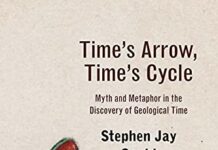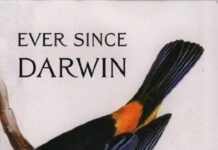
Ebook Info
- Published: 2011
- Number of pages: 288 pages
- Format: PDF
- File Size: 0.00 MB
- Authors: Stephen Jay Gould
Description
Completed shortly before his death, this is the last work of science from the most celebrated popular science writer in the world.In characteristic form, Gould weaves the ideas of some of Western society’s greatest thinkers, from Bacon to Galileo to E. O. Wilson, with the uncelebrated ideas of lesser-known yet pivotal intellectuals. He uses their ides to undo an assumption born in the seventeenth century and continuing to this day, that science and the humanities stand in opposition. Gould uses the metaphor of the hedgehog – who goes after one thing at a measured pace, systematically investigating all; the fox – skilled at many things, intuitive and fast; and the magister’s pox – a censure from the Catholic Church involved in Galileo’s downfall: to illustrate the different ways of responding to knowledge – in a scientific, humanistic or fearful way. He argues that in fact each would benefit by borrowing from the other.
User’s Reviews
Reviews from Amazon users which were colected at the time this book was published on the website:
⭐Stephen Jay Gould (1941-2002) wrote many other important books, such as
⭐,
⭐,
⭐,
⭐,
⭐,
⭐,
⭐,
⭐,
⭐,
⭐, etc.He wrote in the first chapter of this posthumously-published 2003 book, “This book takes an idiosyncratic, but basically historical, approach to the supposed conflict between science and the humanities by admitting the appropriateness, even the inevitability, of struggle at the birth pangs of modern science, but then arguing that we got stuck, centuries ago, in this superannuated assumption of inherent struggle, when no legitimate rationale… supports its continuation. Rather, in our increasingly complex and confusing world, we need all the help we can get from each distinct domain of our emotional and intellectual being… this inevitable and initial estrangement between science and the humanities… became both silly and harmful long ago. Science triumphed in those broad areas rightly belonging to its techniques and expertise. On the other hand, science has no business contending for intellectual turf outside the limits of its stunningly successful methods. Thus the time for peace arrived long ago—and peace would being such blessing and benefits to both perceived sides, as each has so much to learn from the success of the other… we can identify a right and a wrong way to achieve a proper healing of our age-old conflict between science and humanities. This proper path stresses respect for preciously different insights… and rejects the language (and practice) of hierarchical worth and subsumption.” (Pg. 19-20)The curious title of the book is explained: “The fox devises many strategies; the hedgehog knows one great and effective strategy” (Pg. 2) He explains, “I use the fox and hedgehog as my model for how the sciences and humanities should interact because I believe that neither pure strategy can work, but that a fruitful union of these seemingly polar opposites can, with goodwill and significant self-restraint on both sides, be conjoined into a diverse but common enterprise of unity and power. The way of the hedgehog cannot suffice because the sciences and humanities… do different things, each equally essential to human wholeness. We need this wholeness above all, but cannot achieve the goal by shearing off the legitimate differences… that make our lives so … complex. But if we lose sight of the one overarching goal—the hedgehog’s insight—underneath the legitimately different concerns and approaches of these two great ways, then we are truly defeated… But the way of the fox cannot prevail either, because too great a flexibility may lead to survival of no enduring value.” (Pg. 5-6)He criticizes “creation scientists” who explain the fossil record as “the product of a single event that occurred during the few thousand years of allotted biblical time and left a paleontological record ordered not by the millions of years needed to evolve new species from their predecessors, but only in the few years required to deposit all fossils in order of their density—a patent empirical absurdity since some of the lightest and most delicate fossils occur in the oldest strata, while many massive forms (mammoth teeth and bones for starters) can only be found at the top of the stratigraphic pile.” (Pg. 27)He points out, “the celebrated battle of Ancients and Moderns cannot be read as a dichotomous struggle with an alternative and fully adequate mapping as scientists (Moderns) versus humanists (Ancients)…. this simplistic double dichotomy fails by any legitimate criterion… First of all, many of the greatest naturalists of Western history … followed the Ancient line, with emphasis upon linking modern knowledge of organisms to Aristotle’s and Pliny’s evidently superior by incompletely preserved insights… Second, virtually all leaders of the Scientific Revolution… learned the standard corpus of Latin and Greek writings, and revered (and liberally quoted) those works, even in their defenses of Modern observational methods.” (Pg. 84)He observes, “Even the canonical tale of Galileo’s forced recantation in 1633 cannot stand as an episode between science and faith. Urban VIII remains a villain, and Galileo a hero, in my book, but Galileo was also a frightfully undiplomatic hothead who brought unnecessary trouble upon his own head. He had, after all, received an official imprimatur for publishing his book on Ptolemy versus Copernicus. Church authorities only required that he present an ‘honest’ debate between the two sides, and that he depict heliocentrism as a mathematical hypothesis rather than as empirical truth… If Galileo had so proceeded, the Copernican view would have triumphed by the inherent character of its superior arguments. Instead, Galileo couldn’t resist his urge to ridicule the Ptolemaic opposition by awarding the defense of this position to a character named Simplicio, and by providing him with arguments that matched his name in acumen. No monolithic ‘church’ condemned Galileo, and the considerable cadre of ecclesiastical scientists mostly deplored… the fate of a dear colleague…” (Pg. 88-89)He recalls, “If I may … admit an embarrassing example from my very first publication, I wrote an essay on uniformitarianism in geology… I had learned from day one of my first course in geology that the ‘bad guys’ of the early nineteenth century… known (boo, hiss) as ‘catastrophists,’ were unscientific theological apologists who argued for paroxysmal geological change at global scale because they dogmatically accepted both the efficacy of miracles and the six-thousand-year literal chronology of Genesis. But I read and read, and never found a hint of affirmation for either claim. Rather, all leading catastrophists seemed to agree with the uniformitarians about an ancient earth. They also shunned miracles as outside the course of natural law, and therefore incapable of scientific explanation. In fact the catastrophists seemed to be making the theoretically honorable (if factually dubious) point that geological dynamics … had been primarily paroxysmal but entirely natural—rather than gradual and accumulative as the uniformitarians favored.” (Pg. 96)He suggests, “what about all the so-called ‘junk DNA’? Some may exist for truly random reasons unrelated to natural selection… Other components of ‘junk’ may have utilities as yet unimagined, and perhaps at emergent levels not yet understood in the embryology of bodies.” (Pg. 231-232)He concludes, “I too seek a consilience, a ‘jumping together’ of science and the humanities into far greater and more fruitful contact and coherence—but a consilience of EQUAL REGARD that respects the inherent differences… and seeks to emphasize and nurture the numerous regions of actual overlap and common concern… Let love of learning be the hedgehog’s one great activity, with wisdom as the one great goal… with science and the humanities as the two great poles of support to raise the common tent of wisdom.” (Pg. 259)Besides being a highly creative evolutionary theorist, Gould was also a brilliant writer and an engaged “public intellectual.” His presence is sorely missed on the scientific and literary scene.
⭐Stephen Jay Gould taught me several interesting facts. The foremost being the history of the story. I had always thought of myself as a fox and a good friend as a hedgehog. Gould persuaded me that we were both and neither. He also persuaded me that, although I considered myself a modern, I automatically became an ancient when I began teaching.While I enjoyed the book, I struggled with parts that needed editing. I understand that the author wasn’t around to check the galleys. It shows. A few of the arguments are convoluted. The places where the author refers to his other writings come off as promotional.Learning about the Magister’s Pox was buried deep in the text. Maybe I’m just not bright enough to understand.I especially enjoyed many of the author’s asides. We share many of his pet peeves. We also share a distrust of universals.
⭐This is Stephen Jay Gould’s final book, published posthumously. I am a bit in love with the lovely Gould (even if he is dead)and his approach to science and life so I was really excited.Unfortunately, like many truly great thinkers, and people, he does have little foibles and pet peeves that left unchecked drive me insane and can stop me reading him for a while, such as:1.He does bang on a bit, and can repeat himself ad nauseum, as if we haven’t understood his point2. Some of his personal narrative accompanying his science is somewhat self-serving3. Too many baseball correlations for this Anglo-Australian womanEditing is the answer.In previous books these foibles seem to have beencontrolled enough to keep this an occasional thing. Dear reader: I threw this book down too many times shouting STOP IT, for it to have been entirely enjoyable. The editors seem more intimidated of him dead than alive.Nevertheless: it’s still more interesting, more compassionate and more solid than most books. Ever. Read it if you love Gould and, like with a great friend, you can put up with his unedited tics because they’re, well, his own.
⭐As a long-time reader of Stephen Jay Gould’s books and his years of monthly articles in Natural History, I found this title to be an excellent representation of SJG’s best ideas and thoughts on Science and the Humanities. As always SJG’s choice of words and phrases is impeccably precise, and lends an aura of anticipation to the next paragraph. SJG does bring a consilience to the dichotomous world of Science and the Humanities and Gould’s book “The Hedgehog, The Fox, and The Magister’s Pox” deserves a much wider audience.
⭐good
⭐As ever with Gould wise thinking beautifully written
⭐Great collection of essays by an amazing author.
Keywords
Free Download The Hedgehog, The Fox And The Magister’s Pox: Mending and Minding the Misconceived Gap Between Science and the Humanities in PDF format
The Hedgehog, The Fox And The Magister’s Pox: Mending and Minding the Misconceived Gap Between Science and the Humanities PDF Free Download
Download The Hedgehog, The Fox And The Magister’s Pox: Mending and Minding the Misconceived Gap Between Science and the Humanities 2011 PDF Free
The Hedgehog, The Fox And The Magister’s Pox: Mending and Minding the Misconceived Gap Between Science and the Humanities 2011 PDF Free Download
Download The Hedgehog, The Fox And The Magister’s Pox: Mending and Minding the Misconceived Gap Between Science and the Humanities PDF
Free Download Ebook The Hedgehog, The Fox And The Magister’s Pox: Mending and Minding the Misconceived Gap Between Science and the Humanities





